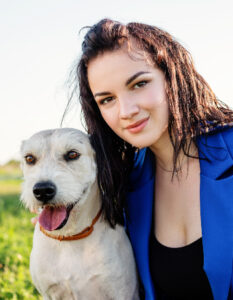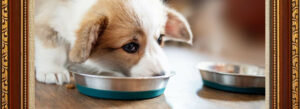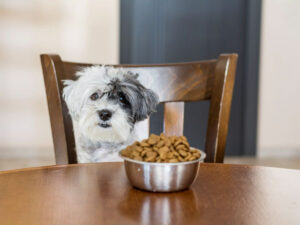Being with our puppy is often the most joyous moment of our day. However, we can not always be present to enjoy this time. Some puppies act unsettled at our departure; this is a symptom of separation anxiety.
Your puppy may have a solid bond with you and do not understand that you will return to them. This causes them to get restless in your absence.
Therefore it should be your priority to know how to help a puppy with separation anxiety.
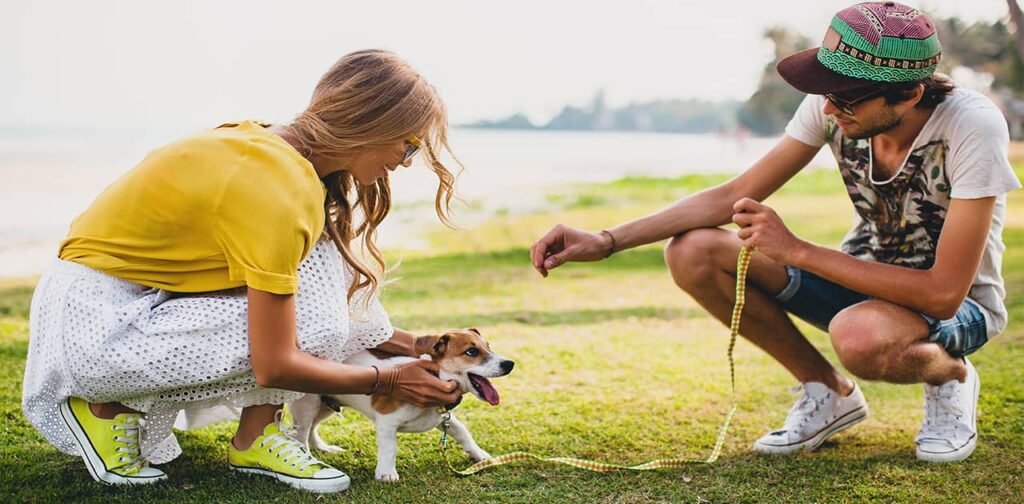
How to Help a Puppy with Separation Anxiety
Separation anxiety can cause your puppy cognitive concerns. Allow me, Garrity, a seasoned veterinarian to help you through your journey of making your adorable fur buddy independent and resilient even in your absence with a how to help a puppy with separation anxiety guide.
Why do puppies suffer from separation anxiety?
Separation anxiety is quite common among puppies as they are at their developing stage in life and have not developed strong cognitive abilities. Research shows that 8 out of 10 dogs have separation anxiety.
Puppies who form a strong bond with their owner and get attached may experience separation anxiety. Puppy’s with separation anxiety experience distress and anxiety, if they are separated from their owner or left alone. You can observe your puppy acting out a set of behaviors which will clearly indicate emotional distress if they have separation anxiety.
Common causes behind puppy’s separation anxiety can be early trauma or abandonment, change in ownership, lack of socialization, breed predisposition, change in routine, lack of mental and physical exercises.
Accordingly, your departure cues, absence of other pets or companions, new environment, sudden change, and lack of gradual training can instantly trigger separation anxiety.
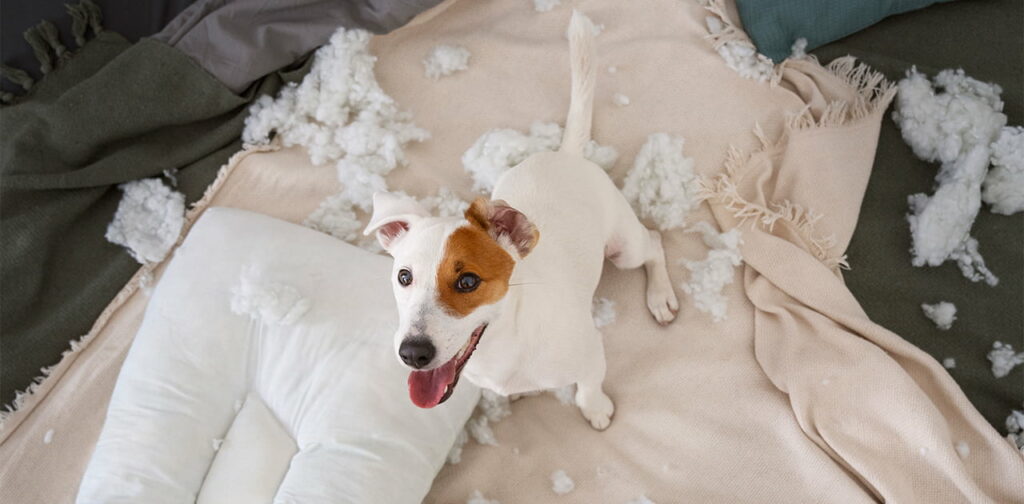
Signs of Separation Anxiety in Puppies
Before discussing how to help a puppy with separation anxiety, it is important to be aware of your puppy’s separation anxiety for their overall wellbeing. Your puppy may not be able to talk but they are alway in need of your love and care.
Showing symptoms is their way to communicate to you. Let’s discuss the common symptoms of separation anxiety in puppies and how you can spot it.
- Excessive Whining or Barking
- Destructive Behavior
- Pacing or Restlessness
- Attempts to Escape
- House Soiling
- Drooling or Panting
- Dilated Pupils
- Refusal to Eat
- Hyper Attachment
- Depression or Lethargy
- Exaggerated Greetings
Allow us to elaborate through real life situations. As you may leave their sight you can notice some they may start barking or whining loudly which does not happen when you are around. It can also happen due to leaving cues for example, picking up your bag and keys, wearing shoes.
Your puppy may start destroying the sound as you separate from him for a little while. They can start scratching on furniture, or chewing aggressively. You may notice him to be unable to shut down and uncomfortably walk around the room.
Your puppy may try to escape the room in order to find you and be with you. Your puppy starts urinating indoors or defecating inappropriately regardless of being potty trained. You may also get to encounter refusal to eat and exaggerated greetings from your puppy.
How to Treat and Prevent Puppy Separation Anxiety
Since you can not be around your pup all day long, you must implement early socialization and gradual exposure to being alone. This will help you prevent separation anxiety, and acting out destructive behaviors.
This will also foster independence as your puppy does not need you to be comfortable and confident. As a result they will experience a reduction in stress and fear. Puppy’s may feel the fear of you leaving them and abandon them.
Introducing them alone will help them to be confident of you returning back to them. Implementation of alone time can help in promoting and training them to be well behaved in your absence. Additionally, alone time will help you facilitate daily routine for both you and your pup.
There will be situations where you may not be around to protect them or assure them. Gradual introduction alone time and socialization can help your puppy adapt and react properly to different situations.
While preventing many behavioral issues socialization will help your puppy to be happy and playful around others giving them opportunity for more human interactions.
Step by Step Guide
Let’s discuss how you can introduce alone time and socialization to your fur buddy.
Step 1: Try leaving for short time
Firstly, you can start with short durations of alone time. Make sure your pup is already familiar with the surroundings and comfortable. Make sure the room is puppy proofed. You can keep their bed, toys, and water bowl for familiarity. You can step outside of the room or go outside briefly. Do not forget to observe your puppy’s reaction.
Step 2: create a positive association
You can give them a delicious treat or a special toy before leaving. On your return offer them praise and attention. It is important that you use an interactive toy. An interactive toy will keep your puppy engaged and occupied during your absence.
You can find puzzle toys that treat dispensaries to have the optimal level of engagement and cognitive growth. Your pup may act over excited or attention-seeking before you leave or when you return. Ignore such behavior until they are settled.
As soon as they are settled offer them a tasty treat or playtime with a toy to let them know that calm behavior will be rewarded.
Step 3: Practice departure cues
Now that you have gotten your puppy acclaimed with your short absence you need to practice departure cues. Practice cues that indicate your departures like picking up keys, putting on a coat, or grabbing a bag without leaving.
This will break the cue’s association with your departure. While leaving and returning try to stay calm to avoid exciting your pup. Make sure your pup is getting their regular exercises before you leave.
This will help them to be relaxed and rest during their alone time. Play, walks, and training sessions can help tire them out.
Step 4: Ensure safety and comfort in your absence
During this time start taking extra care of their comfort as you will not be around them for a while. Again, comfortable bedding, interesting toys, availability of food and water must be taken care of.
This gradual progression helps build their confidence. With time your puppy will be able to adapt and enjoy alone time. You have to establish a routine with a consistent schedule for leaving and returning.
This predictability will help them to hold their trust for you to be back eventually.
Step 5: Early socialization
Start early socialization to get your puppy comfortable around other people and pets. Times when you are not available puppies may need to interact with other human beings to express their needs.
An early socialization will help them to interact and express their needs gently. This also helps in having a playful time even when you are not around.
Step 6: keep monitoring and adjusting
While you are gradually making the transition if you witness any distress and anxious activity, try adjusting the duration. Talking to an expert can always help. You can easily contact an experienced dog owner, breeder or vet.
In case of extremity do not delay your visit to the vet as we can offer personalized and experienced advice on how to help a puppy with separation anxiety.

Additional Tips for Coping with Puppy Separation Anxiety
As of now, you are aware of how to help a puppy with separation anxiety. You can try some additional tips to enhance your puppy’s alone time and early socialization.
- Invest in a variety of enrichment toys that can keep your puppy mentally engaged.
- Leave an item with your scent, like a piece of clothing.
- Consider using a webcam or pet monitor to keep an eye on your puppy.
- Leave on soothing background noise to create a serene environment.
- Arrange for a doggy daycare or a pet sitter to spend time with.
- Try regular outdoor walks.
- Spend quality time with your puppy to make up for the time you have been away.
Conclusion
Regardless of separation anxiety being extremely common in puppies, if taken proper measure you can easily empower your puppy with gradual implementation of alone time and early socialization. You can research more for better understanding.
Now that you are equipped to eliminate separation anxiety you can easily help your little buddy through his journey of empowerment.

